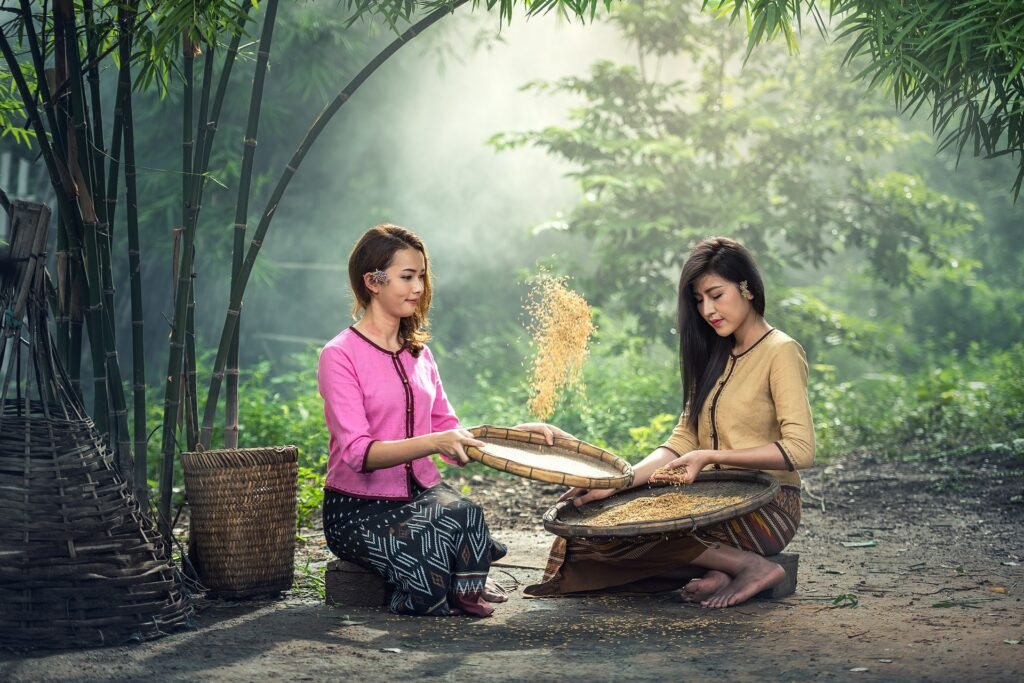Annually, over one million Indians travel to Pattaya and for the first-timer, Pattaya really looks similar to Pondicherry. Of course, Pondicherry doesn’t have working girls but things seem very similar. Many people don’t know that South India and Thailand is very similar in nature from traditions to religion everything is similar. Let me list down few similarities below.
The History
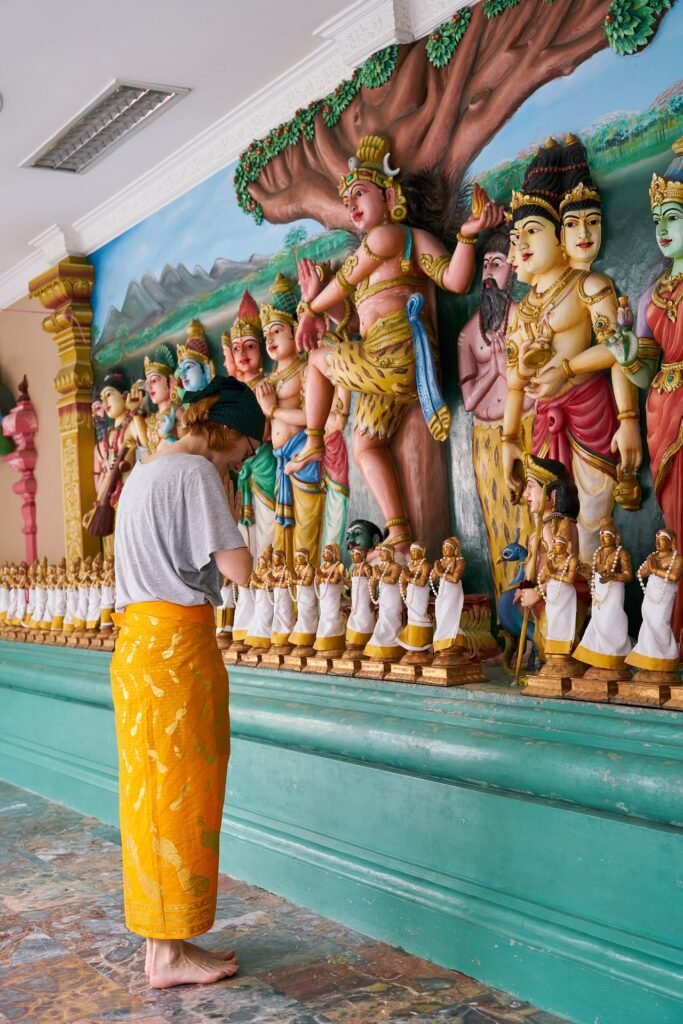
The central Thailand region was once been the home of the Mon Dvaravati (A part of Dravidian) culture, which prevailed from the 7th century to the 10th century. The inscriptions of Dvaravati were in Sanskrit and Mon using the script derived from the Pallava alphabet of the South Indian Pallava dynasty. The religion of Dvaravati is Hindu cultured Buddhism who worshipped Vishnu.
The Kingdom of Ayutthaya (1351–1767)
Ayutthaya’s name is derived from Ayodhya, an Indian holy city and the birthplace of Sri Rama. The first ruler of the Kingdom of Ayutthaya, King Uthong (r. 1351-1369), made two important contributions to Thai history: the establishment and promotion of Theravada Buddhism as the official religion to differentiate his kingdom from the neighbouring Hindu kingdom of Angkor and the compilation of the Dharmaśāstra, a legal code based on Hindu sources. The Dharmaśāstra remained a tool of Thai law until late in the 19th century.
Rattanakosin period (1782–present)
General Chakri succeeded Taksin in 1782 as Rama I, the first king of the Chakri dynasty. In the same year, he founded a new capital city across the Chao Phraya River in an area known as Rattanakosin Island and the capital now famously called as Bangkok.
Ramakien
Ramakien, also known as Ramayana is an Indian Epic but it is also Thailand’s national epic. A painted representation of the Ramakien is displayed at Bangkok’s Wat Phra Kaew, and many of the statues there depict characters from it.
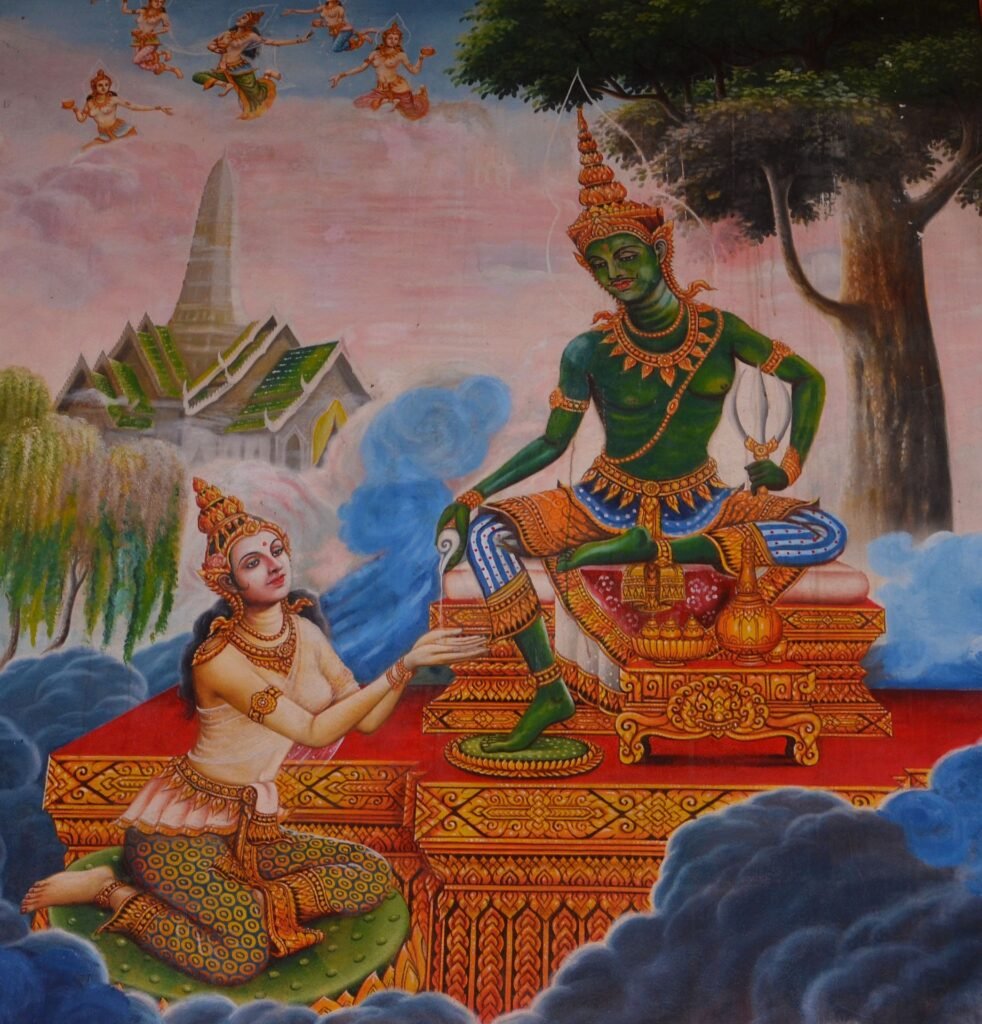
The Real Name of Bangkok
The name of the capital city of Thailand has an actual official name, and it is not Bangkok. The real name is “Krung Thep Mahanakhon Amon Rattanakosin Mahinthara Ayuthaya Mahadilok Phop Noppharat Ratchathani Burirom Udomratchaniwet Mahasathan Amon Piman Awatan Sathit Sakkathattiya Witsanukam Prasit” which means “The city of angels, the great city, the eternal jewel city, the impregnable city of God Indra, the grand capital of the world endowed with nine precious gems, the happy city, abounding in an enormous Royal Palace that resembles the heavenly abode where reigns the reincarnated god, a city given by Indra and built by Vishnukarma”. Indra and Vishnukarma are both Indian Hindu Gods.
Namaste
Indian Añjali Mudrā or Namaste is called as Wai in Thailand. The word often spoken with the wai as a greeting or farewell is “sawatdi” or “sawasdee” derived from the Sanskrit word svasti (स्वस्ति meaning ‘well-being’).
Gods In Thailand
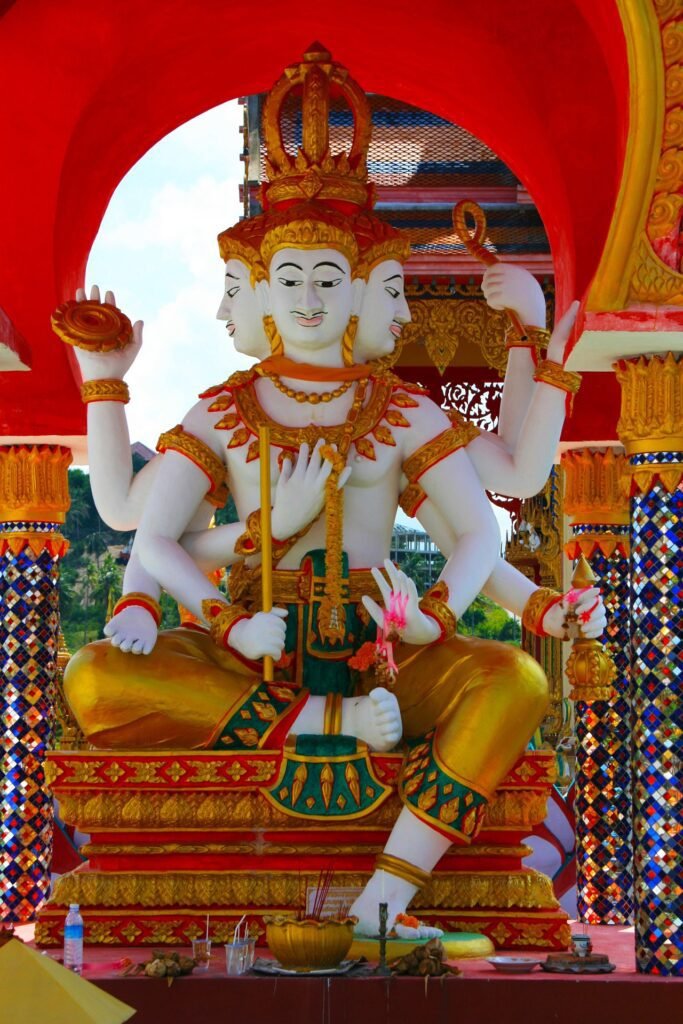
Phra Narai/Witsanu – Vishnu
Phra Isuan – Shiva
Phra Phrom – Brahma
Phra Uma-thewi – Parvathi
Phra Laksami – Lakshmi
Phra In – Indra
Mali Warat – Visravas (God of Demons)
Phra A-thit – Surya
Phra Phai – Vayu
Phra Witsawakam/Witsanukam – Viśhwákarma
Pra Ram – Lord Rama
Phra Lak – Lakshmana
Phra Sida – SitaHanuman
Phra Phikanet / Phra Phikanesuan – Ganesha
Emblem of Thailand
The national emblem of Thailand is called the Phra Khrut Pha or Garuda in Sanskrit. The Garuda was officially adopted as the national emblem by King Vajiravudh (Rama VI) in 1911.
Language
The Thai language bears a close affinity with Dravidian languages. A close linguistic affiliation between India and Thailand can be found in common Thai words like Ratha Mantri, Vidhya, Samuthra, Karuna, Prannee etc. King Ramkhamhaeng created the Thai alphabet in 1283 which he modelled it on the ancient Sanskrit and Pali through the medium of the old Khmer characters.
Ceremonies
1. Triyampawai Ceremony – A Dravidian Hindu Brahmin ceremony performed to pay homage to the God Shiva.
2. Royal Ploughing Ceremony – Similar to Pongal or harvesting festival.
3. Royal Ceremony for preparing Celestial Rice – A offering made to Lord Indra. (This was abolished by Sri Krishna: Refer Govardhana Giri Pastime)
4. Kathin Ceremony – Offering new cloths to Monks.
5. Loy Krathong – Diwali (not with crackers but lamps)6. Songkran Festival – “Songkran” signifies the sun’s move into the first house of the zodiac. In India, we call it as Ugadi.
Other Influences
Thailand does have other Influences from India like astrology, Palm Reading, herbal medicines, food and spices. Fact: Thai people actually learnt how to use spices in their food in various ways from Indians.
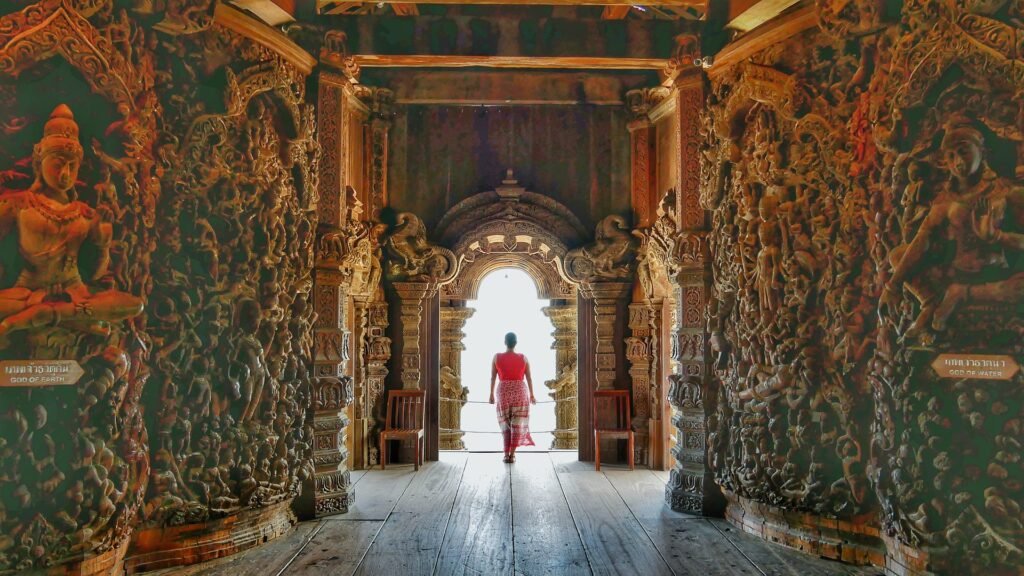
Lesser Known Facts
1. 80% of Thailand people don’t know that they carry genes of Dravidians/ South Indians.
2. Buddhism was spread across Thailand by King Ashoka. 58,000,000 Thai people, an overwhelming 94% of the total Thai populace adheres to Hindu-Buddhism.
3. The dark/ wheat completion of Thai People comes from Dravidians/ South Indians. The blend mostly happened during the Sukhothai period (1275–1350).
4. The first group of Indian Brahmans who entered Siam before the founding of Sukhothai as the first capital of Siam (1275–1350) popularized Hindu beliefs and traditions.
5. The Thai tradition to call each king of the present Chakri dynasty Rama with an ordinal number, such as Rama I, Rama II etc. is still in practice.)
There are many more similarities between Thailand & South India. If you know any more similarities then comment below.

